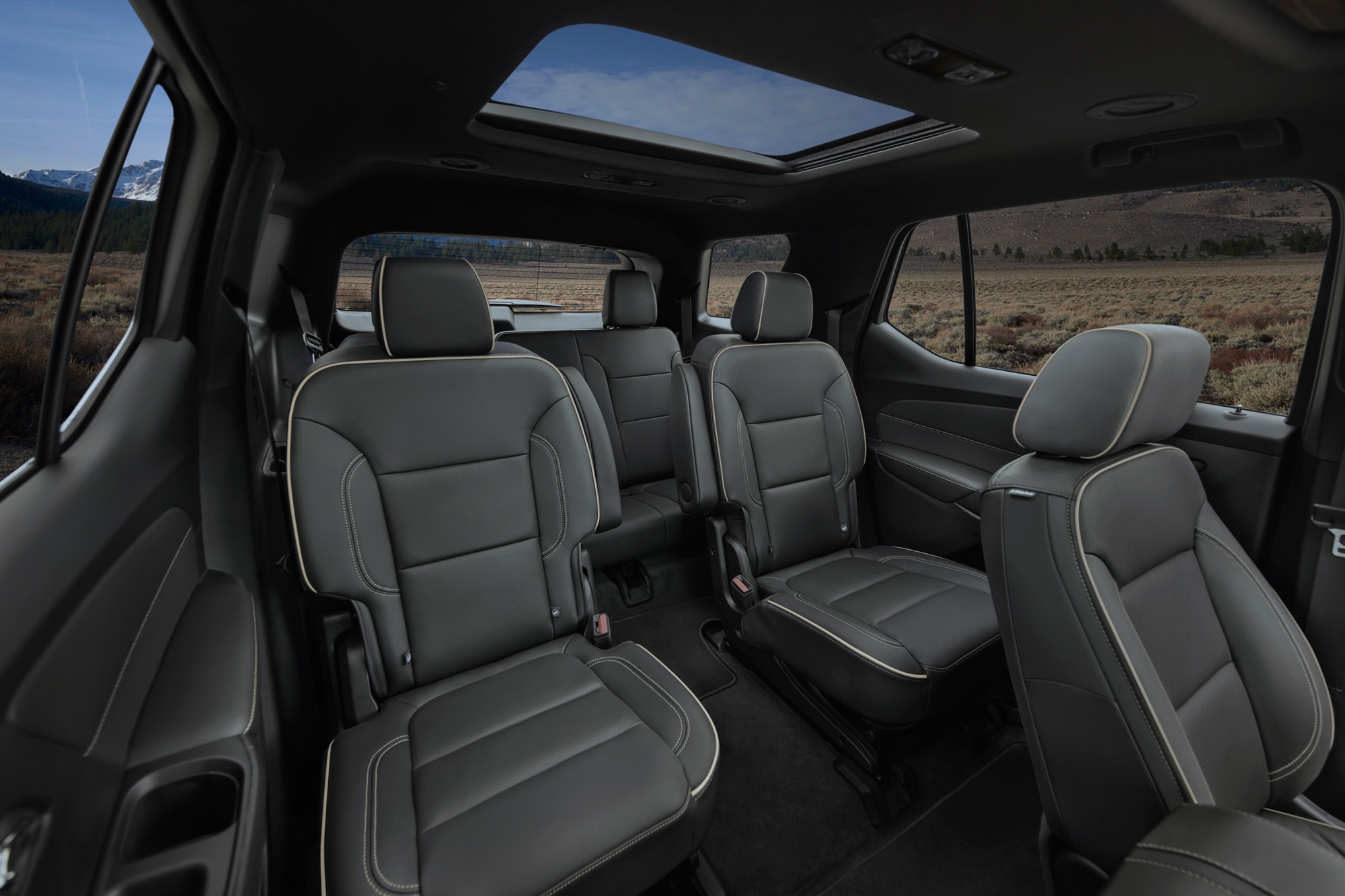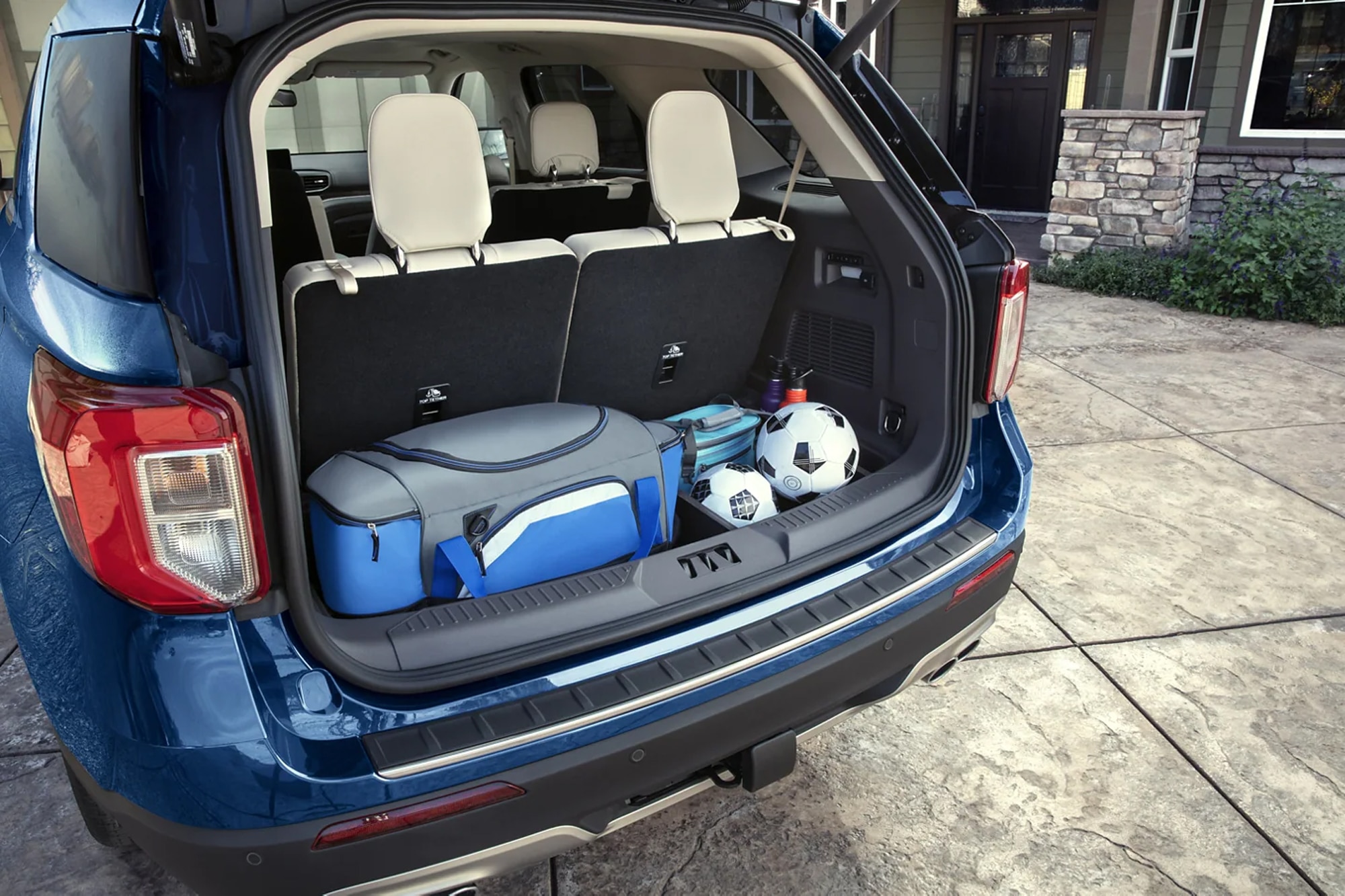Compared: 2022 Ford Explorer vs. 2022 Chevrolet Traverse
How do the latest versions of the Chevrolet Traverse and Ford Explorer stack up in this mid-size three-row SUV match-up?
 Chevrolet/Ford
Chevrolet/Ford
Article QuickTakes:
When it comes to hauling several kids and all the stuff that comes with them, few options can beat a mid-size three-row SUV. While Japanese rivals like the Toyota Highlander and Honda Pilot have made their mark on the segment, the domestic automakers, Ford, General Motors, and Stellantis (formerly known as Chrysler), were long considered the undisputed kings of the family hauler genre. That fact of life still holds when you look at the 2022 Chevrolet Traverse and the 2022 Ford Explorer, these two are part of the segment’s heavy hitters in sales.
Ford Explorer vs Chevrolet Traverse: Price
The Chevrolet Traverse received an update for 2022 with new exterior and interior styling but is slightly less expensive than the Explorer, with a base front-wheel drive (FWD) LS version starting at $34,895 with destination fees. All-wheel drive (AWD) is a $2,000 option. The popular LT model is split into cloth ($41,195) and leather ($43,095) versions, and adds remote start, a bigger 8.0 inch infotainment screen, and power-operated liftgate.
The 2022 Explorer has a slightly higher base price of $35,040, but manages to outshine the Traverse by offering more standard equipment like a power liftgate and an eight-way power driver seat. It also has a rear-wheel drive (RWD) platform versus the Traverse’s base FWD setup. Like the Chevy, AWD is an extra $2,000.
As you climb up the trim ladder, the pricing differences between the two remain slim until you reach the luxury-focused trims. Here, the $55,290 Explorer King Ranch RWD is more expensive than the range-topping $54,595 Traverse High Country AWD models, but Ford makes up for the higher cost by offering richer interior materials.
 Chevrolet
Chevrolet
Ford Explorer vs Chevrolet Traverse: Fuel Economy
Thanks to its standard 300 hp turbocharged four-cylinder engine and optional 318 hp hybrid V6 , the Explorer manages to top the Traverse in fuel economy. The Traverse offers just one engine: a naturally aspirated 3.6L V6 that makes 310 hp. The engine has been a staple in the Traverse, but the SUV’s mediocre 18 mpg city and 27 mpg highway EPA estimates (AWD models get 17/25 mpg) are no match for the Explorer Hybrid’s 27/28 mpg RWD and 23/26 mpg AWD ratings, while the Ford turbo-four’s 21/28 mpg RWD, and 20/27 mpg AWD numbers also trump the Traverse.
The Explorer is also available with a 400 hp 3.0L twin-turbocharged V6 in select trims (ST, Platinum, King Ranch), but buyers have to trade in fuel economy—18/26 mpg RWD, and 18/24 mpg AWD—for the brawnier performance.
 Ford
Ford
Ford Explorer vs Chevrolet Traverse: Features
With seating for up to eight passengers, the Traverse offers one more seat and more cargo room than the Explorer. Storage space measures 23 cu.-ft. with the seats up, which expands to 98 cu.-ft.with the second- and third-row seats folded down. The Explorer, in contrast, boasts 18 cu.-ft. of space with the seats up and 88 cu.-ft. with the middle and rear seats folded.
Both crossovers come standard with automatic emergency braking, lane-keeping assistance, and automatic high beams, but only the Ford includes blind-spot monitoring on every Explorer it builds. On the Traverse, that feature is optional on the base trim and included on all others. Ford’s MyKey and Chevy’s Teen Driver Technology offer families with new drivers peace of mind by restricting speed and limiting audio system volume. The Traverse goes a step further with its Buckle to Drive feature, which prevents someone from shifting into gear without first buckling their seat belt.
All Traverses come with wireless Android Auto and Apple CarPlay capability, while Explorers require you plug your phone into the vehicle for smartphone integration. Upper-trim Chevrolets are also available with a rearview mirror that can switch between a traditional mirror and a camera display that provides a clear picture of the road behind you when passengers or cargo would otherwise block your view.



